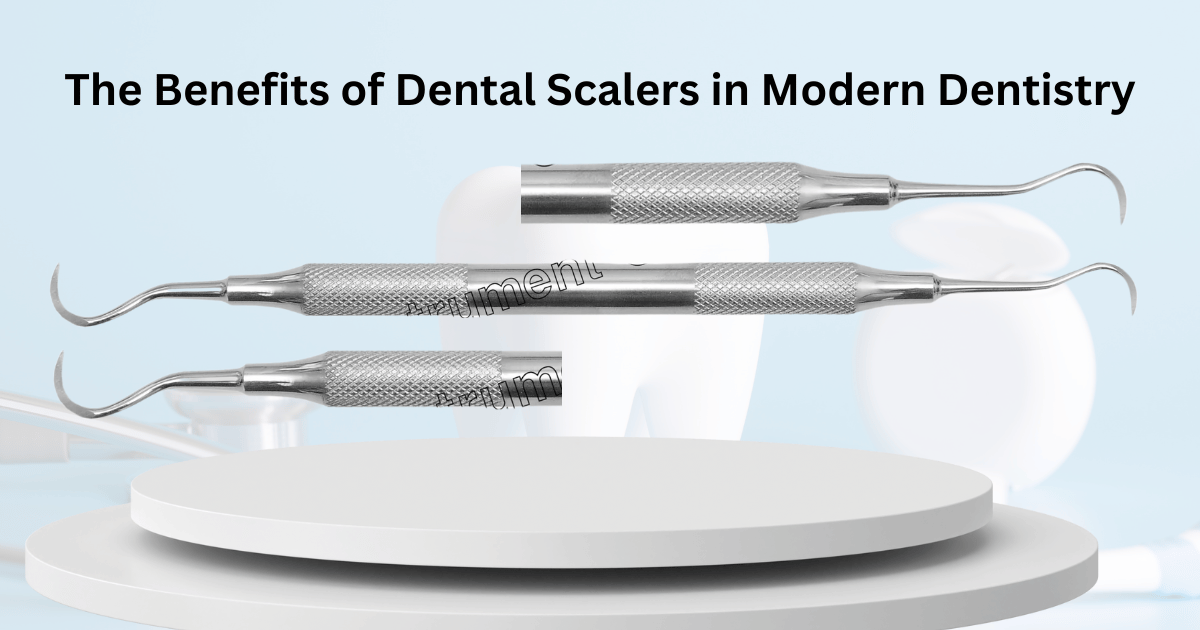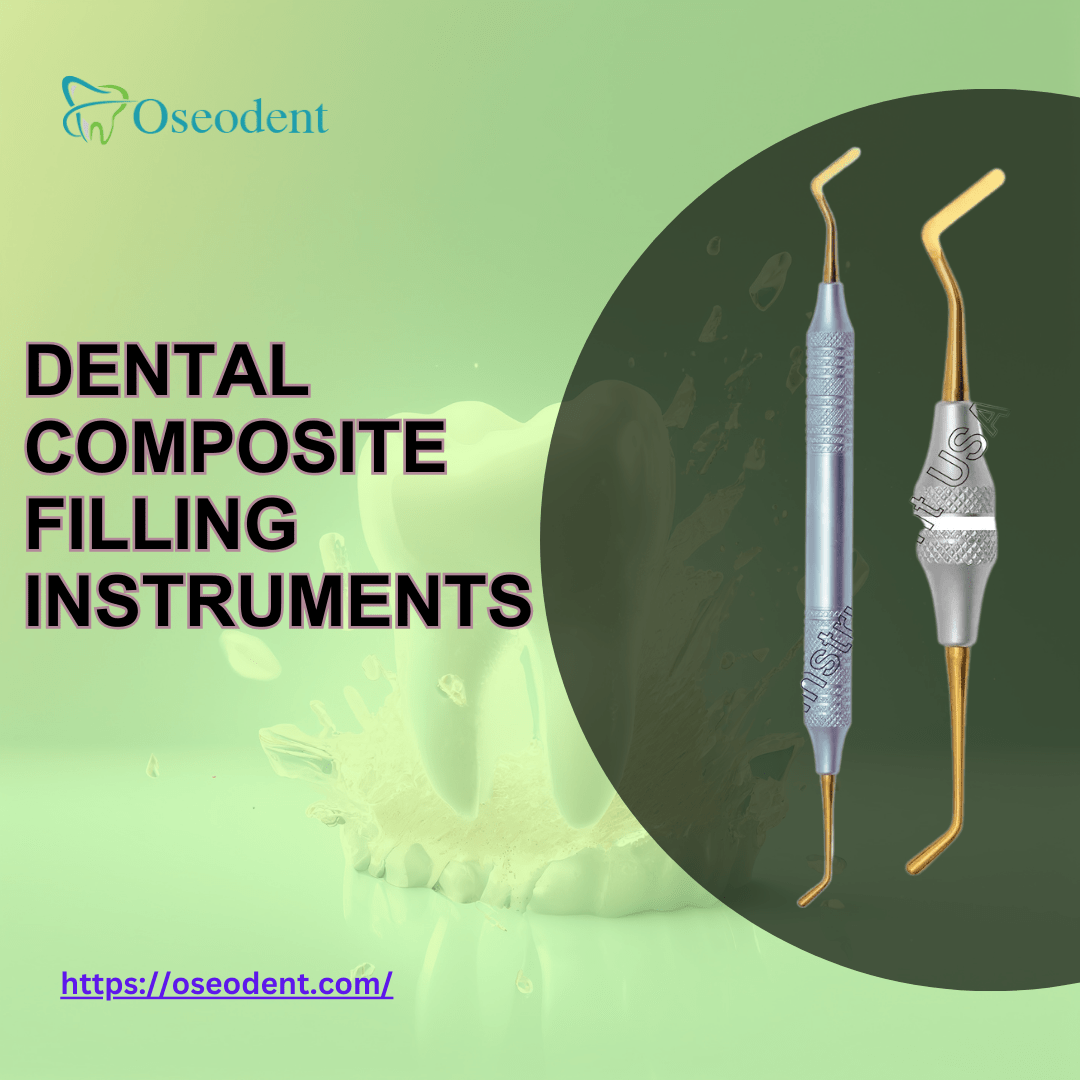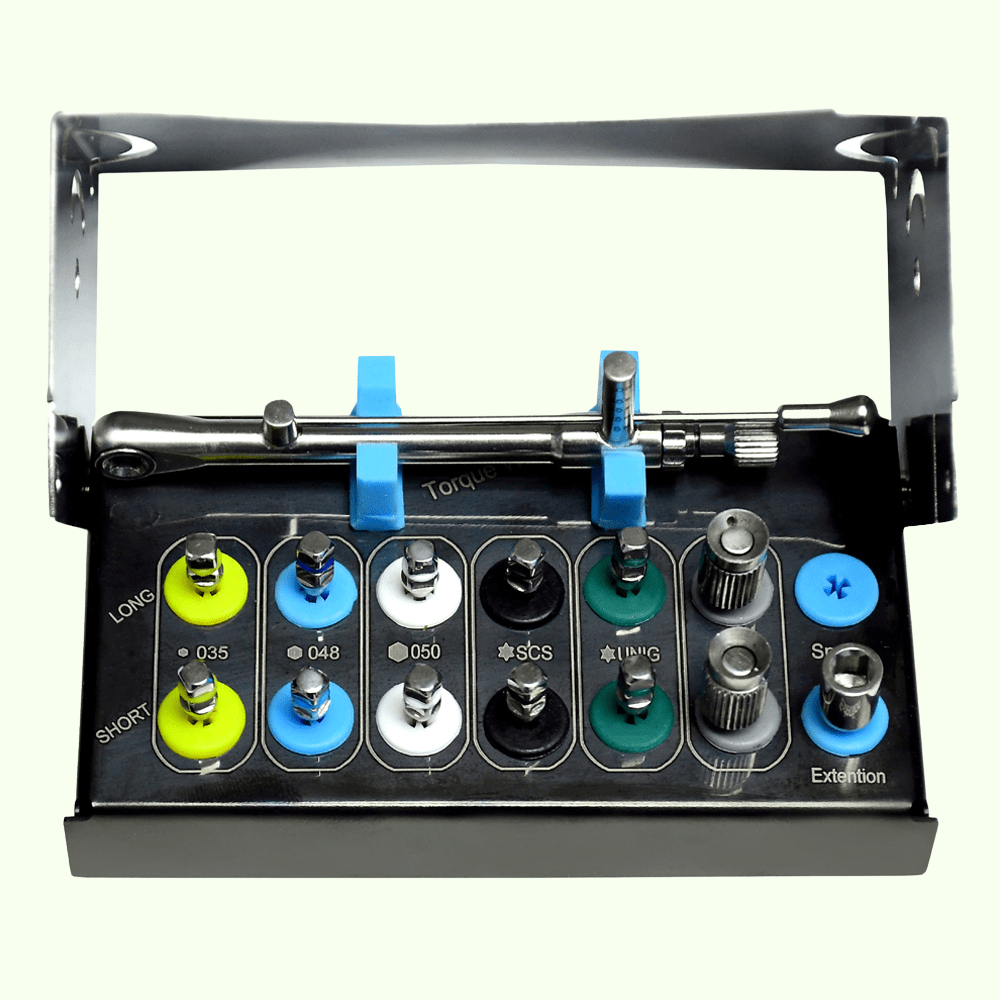Dental practitioners are always searching for instruments that simplify their tasks without compromising accuracy or patient care. One such essential toolkit is the universal prosthetic kit, which provides a comprehensive solution for a variety of dental implant and restoration tasks. Having a universal prosthetic kit in your toolkit can benefit your dental practice, regardless of your level of experience.
In this article, we’ll look at how this kit boosts output, why professional dental clinics need it, and how it benefits both dentists and patients.
What is a Universal Prosthetic Kit?
A complete collection of dental instruments designed for implant and restorative dentistry is called a universal prosthetic kit. It is made up of specific instruments that dentists employ for many different purposes, including placing implants and overseeing multi-tooth restorations.
The kit ensures that every piece of equipment needed for precision, efficiency, and patient comfort is available when needed, making it a vital tool in modern dental offices. By offering alternatives for both temporary and permanent restorations, a universal prosthetic kit enhances dental care quality and streamlines dentists’ productivity.
The Growing Importance of Tools in Dental Implants and Restorations
Dental implants are among the most often used treatments for lost teeth because they give patients stable, long-lasting replacements. But the procedures require precision and the right set of tools. Instruments such as implant drills and dental torque wrenches are necessary to guarantee the accuracy of dental implants.
Similarly, to provide the best possible restoration fit, instruments such as carbide dental burs help precisely shape teeth for restorative operations like crowns, fillings, or bridges. Whether you are working with one implant or several teeth that require restoration, the universal prosthetic kit provides you with all the tools you need to effortlessly handle every stage of the process.
Why Invest in a Universal Prosthetic Kit?

Dentists, oral surgeons, and students all benefit from investing in a universal prosthetic kit. Here’s why:
1. Time-Saving Convenience
Efficiency is vital at dental clinics since many processes are performed there every day. Having a universal prosthetic kit means you don’t have to carry along many tools because it has everything you need. Additionally, because this toolkit is pre-organized, professionals may do their tasks more quickly without sacrificing precision.
2. Greater Precision
When performing sensitive operations like implant implantation, precision is essential. A dental torque wrench makes sure that implants are positioned with the right tension, which reduces the chance of failure or issues. Similarly, carbide dental burs offer precise and clean cuts, which are essential for preparing teeth for crowns or bridges.
3. Cost Efficiency
Buying a universal prosthetic kit saves you money by supplying you with all the tools you need at one time instead of having to buy them separately. Additionally, the durability of these high-end instruments ensures their longevity and gradually reduces wear and replacement expenses.
How It Elevates Dental Practice Efficiency
The goal of a universal prosthetic kit is to streamline dental clinic operations, from finishing restorations to getting ready for implants. Here are some actual instances of how this kit raises the standard and effectiveness of care:
Implant Positioning with Accuracy
Every step of implant placement, including the drilling into the bone, calls for meticulous attention to precision. The torque wrench ensures the right amount of torque is applied, and the implant drill in the set allows for exact bone preparation. Patients can benefit from longer-lasting implants with shorter recovery times as a result of the decreased risks.
Procedures Made for Restorative Easy
Temporary fillings, crowns, and bridges can need intricate, multi-step processes. The carbide dental bur, which enables accurate cutting through dentin or enamel to produce a perfect fit for either temporary or permanent restorations, is one of the most crucial components of the universal prosthetic kit. Because of these burs’ efficiency, teeth may be prepared more quickly, saving the dentist time and effort while also improving patient comfort.
Multiple Tooth Repairs
Working with single-tooth implants or multi-tooth restorations requires having the right tools on hand. The tools in the toolkit facilitate seamless transitions between procedures, cutting down on session duration and ensuring more efficient care of complex patients.
What Does a Universal Prosthetic Kit Include?
A universal prosthetic kit is essential for any professional dental practice since it includes a range of devices needed for both dental implants and restorative dentistry. The following gives a more detailed explanation of each instrument in the kit as well as its intended use:
- Torque Wrench for Dentistry: Guarantees that implants are torqued appropriately, which is crucial to avoid issues like overtightening or loosening, which can cause damage to the surrounding bone. With the adjustable torque settings, dentists may tailor the force to each patient’s specific needs, resulting in stable and long-lasting implants.
- Carbide Dental Burs: Dental burs made of carbide are useful for quickly slicing through dentin and enamel. They are renowned for being robust and sharp. These burs are required for procedures that shape teeth to prepare them for fillings, crowns, and bridges. Their versatility makes them excellent for a range of purposes, such as contouring restorations and cavity preparation.
- Implant Drill: The exact engineering behind the implant drill is meant to get the bone ready for the implant to be inserted. It decreases the hazards connected to misalignment and erroneous implant placement by assuring that the implant site is perfectly shaped and aligned.
- Equipment for Temporary Dental Fillings: These are necessary to place temporary fillings in between implant or maintenance visits. They provide patients with immediate comfort and protection until their permanent solution is provided, enabling quick and dependable interim therapy.
- Multi-Tooth Restoration Instruments: These instruments are designed to help in challenging circumstances when several teeth need to be restored simultaneously. They make it easier for dentists to switch between different equipment to replace several teeth in a single consultation, which speeds up the procedure and improves patient outcomes.
- Bone Profiling Instruments: These tools help create the bone around the implant site during implantation, especially in narrow spaces or in cases when the surrounding bone structure is weak. This improves overall implant fit and lowers the possibility of bone resorption obstructing the prosthetic connection.
- Surgical Curettes: These instruments are used to remove any leftover soft tissue from the bone before implant implantation. This ensures a clean and healthy implant site, hence reducing the risk of infection or issues throughout the healing process.
- Implant Depth Gauges: These tools help dentists measure the drilled site accurately so that the implant is placed at the optimal depth for optimal stability. Accurate depth control is essential for the success of implants, especially in cases where bone density varies.
- Tissue Punches: Use a tissue punch to create a hole in soft tissue so that an implant may be inserted. This particular device helps patients recuperate after surgery more quickly and with less pain because it lessens harm to the surrounding tissue.
- Screwdrivers for Abutments and Screws: Each implant requires a perfect fit for the adhesives and screws. Since the kit often includes a selection of screwdrivers that are compatible with different implant systems, the majority of implant brands that are now on the market are compatible with it.
- Impression Copings: Impression copings are used to accurately capture a mold of the orientation and placement of the implant for the final prosthesis. These copings provide a solid and natural-looking finish by ensuring that the prosthesis (bridge or crown) fits precisely onto the implant.
- Hex drivers and ratchets: These tools make it easier to align and tighten abutments and prosthetic parts. While the hex drivers allow for exact adjustments, the ratchet provides the necessary force for connecting components and ensuring their retention during the healing process.
- Tools for Bone Grafting: Spatulas or bone graft carriers are used to insert graft material for increased support when there is insufficient native bone at the implant location. Certain kits may also come with these tools.
- Suture Scissors and Needle Holders: The kit may include suture scissors and needle holders to help in appropriately and safely closing the surgical site after surgery. Accurate suture cutting is ensured by these instruments, which is necessary for healing and scar minimization.
- Forceps and Articulating Paper Holders: These tools help evaluate the patient’s bite after a restoration or implant is placed. The articulating paper is used to evaluate occlusion, and the forceps ensure that the paper is handled and positioned correctly.
- Implant Abutment Torque Controllers: These are essential for regulating the torque applied to implant abutments, avoiding overtightening, which might harm the implant or bone, and guaranteeing that the prosthesis is securely fastened for long-term durability.
Research-Backed Benefits of High-Quality Dental Tools
Several studies have demonstrated the value of precision toolkits in improving dental outcomes. It has been demonstrated that implant failure rates can be significantly reduced by using a dental torque wrench. Precise torque control offers greater implant stability, thereby boosting patients’ long-term success rates.

The benefits of employing carbide dental burs for tooth preparation. A National Library of Medicine study found that 80% of dentists agree a universal prosthetic kit benefits both dentists and patients. Dentists can operate more quickly and effectively thanks to their sharpness and accuracy, which results in better-fitting restorations and fewer patient visits.
Conclusion: Why This Kit is Essential for Dental Professionals
investing in a universal prosthetic kit is a smart move that offers several advantages for any dental practitioner. Having the right tools may help you work more efficiently and effectively whether you’re placing implants, restoring many teeth, or placing temporary dental fillings.
By increasing accuracy, reducing process times, and ultimately increasing patient satisfaction, a universal prosthetic kit enables dental professionals to perform at their highest level.
Browse our extensive variety of dental tools and kits to find the perfect fit for your dental practice. Now is the time to start employing accuracy to get better outcomes!
FAQ’s
Q1. What is a universal prosthetic kit?
A universal prosthetic kit is a comprehensive collection of dental instruments used for implant placement and restorative dentistry. It includes tools like torque wrenches, implant drills, carbide burs, and more to assist in dental procedures efficiently.
Q2. Why should I invest in a universal prosthetic kit?
Investing in a universal prosthetic kit saves time, increases precision, and reduces costs by providing all the necessary tools for implants and restorations in one package. It also enhances the quality of care for your patients.
Q3. How does a universal prosthetic kit improve efficiency in dental practice?
The kit allows dental professionals to complete complex procedures more quickly by having all the required tools at hand, pre-organized for easy use. This reduces setup time and enhances procedural accuracy.
Q4. What are the key instruments included in a universal prosthetic kit?
A typical kit includes torque wrenches, implant drills, carbide dental burs, implant depth gauges, surgical curettes, and other essential tools for both temporary and permanent dental restorations.
Q5. How does the torque wrench in the kit enhance implant placement?
The dental torque wrench ensures the correct tension when placing implants, minimizing the risk of failure or complications by avoiding overtightening or loosening of the implant.
Q6. Can a universal prosthetic kit be used for multiple tooth restorations?
Yes, the kit is designed for both single and multiple tooth restorations. Its tools make it easier to switch between different procedures, reducing the overall session duration and improving care for complex cases.
Q7. What are the cost benefits of a universal prosthetic kit?
Purchasing a universal prosthetic kit is more cost-effective than buying each tool individually. Additionally, the high-quality materials used in the kit’s instruments ensure durability, reducing long-term replacement costs.
Q8. How does the kit improve patient comfort?
The precision and efficiency of the instruments, such as carbide burs for tooth shaping and tissue punches for soft tissue management, lead to quicker procedures and less discomfort for patients during and after treatment.
Q9. What role do carbide dental burs play in restorative dentistry?
Carbide dental burs are used for precise cutting and shaping of teeth during crown, bridge, and filling procedures, ensuring a perfect fit and reducing the need for additional visits.
Q10. How can I choose the right universal prosthetic kit for my practice?
You can browse a variety of kits tailored to different dental procedures. Look for kits that include high-quality instruments that meet the specific needs of your practice, from implant placement to multi-tooth restorations.












